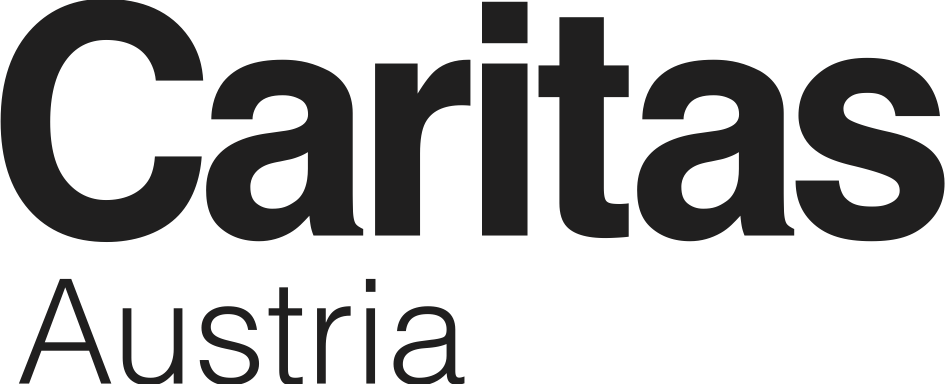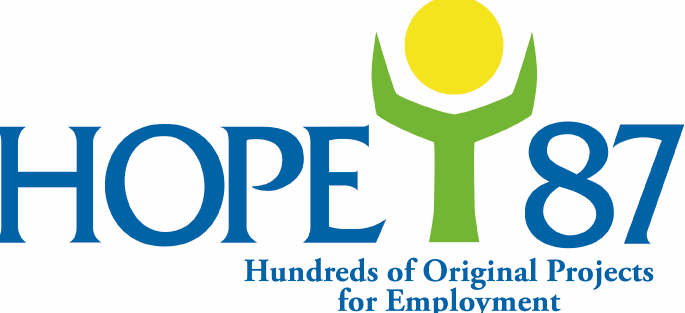Please find below the notes based on which Sara Pantuliano, Managing Director, ODI, made her Panel Keynote Speech on the panel “Why are People Forced to Flee?”
Vienna Humanitarian Congress – ‘Why are people forced to flee?’
Increase in forced displacement
- Forced displacement has become a major and growing global concern. It has grown rapidly over the last decade, increasing on average by 1.6 million people a year between 2000 and 2014.
- At the end of 2015 forced displacement reached a record high of 65.3 million– more than all those displaced during the Second World War.
- This includes 3 million refugees and 40.8 million internally displaced
- Most refugees stay close to their countries of origin. In 2015 eight out of ten refugees lived within one or two land borders from their home country.
- Seven countries – Palestine, Iran, Jordan, Lebanon, Pakistan, South Africa and Turkey – host more than 50{26da92e645e6b151ddb18332fddbc007aa06f7fb46f9267383910f98c1d4b90a} of all refugees
- These figures signify a disproportionate burden on countries in the global south.
- In 2015 refugees and asylum seekers made up 43{26da92e645e6b151ddb18332fddbc007aa06f7fb46f9267383910f98c1d4b90a} of Jordan’s population,
- compared to just 3{26da92e645e6b151ddb18332fddbc007aa06f7fb46f9267383910f98c1d4b90a} in the UK and 0.2{26da92e645e6b151ddb18332fddbc007aa06f7fb46f9267383910f98c1d4b90a} in Australia
Longer displacement
- For most refugees displacement is a long-lasting reality. 14 million refugees have been displaced for at least three years, otherwise known as ‘protracted displacement’.
- Most displacement crises persist for many years. Less than one in 40 refugee crises (or 2.5{26da92e645e6b151ddb18332fddbc007aa06f7fb46f9267383910f98c1d4b90a}) are resolved within 3 years, and protractedness is usually a matter of decades
- Almost half of all current refugees have been displaced for over ten years and 20{26da92e645e6b151ddb18332fddbc007aa06f7fb46f9267383910f98c1d4b90a} for more than 30 years.
- Once displaced for 6 months, a refugee is likely to be displaced for at least three years.
Why do people flee?
- So why are so many people displaced today? We know that conflict is the primary driver of displacement, particularly in terms of cross-border refugee flows.
- The majority of refugees and IDPs have been displaced from and within countries with serious protection, human rights and governance weaknesses. In 2015, two thirds of refugees originated from countries categorised on the Fund for Peace’s Fragile States Index as ‘alert’ and ‘high alert’.
- More than half of all displaced people come from six countries: Afghanistan, Colombia, Iraq, Palestine, Sudan and Syria. All six countries have experienced long-running conflicts, with regular insecurity and violence. Many are far from reaching peace and political solutions.
The changing nature of conflict
- The drivers of displacement today reflect the humanitarian picture more generally. Responding to conflict makes up the bulk of the caseload of international humanitarians.
- In 2015, the top 10 recipient countries of humanitarian funding were all affected by conflict, countries that included Syria, South Sudan, Yemen and Somalia.
- To fully understand what causes people to flee, it helps to look at the dynamics of conflict. In the second half of the 20th century the nature of armed conflicts evolved enormously.
- Today, conflicts are overwhelmingly internal vs international; fought through new forms of warfare, including drones and automated weapons.
- Though on the whole conflicts have become less intense and less deadly, violence in the Middle East is reversing this tren
- Conflict today is dominated by non-state actors.
- For example, Daesh (ISIL) – A global force with thousands (estimates go up to 200,000 fighters) from Syria, Iraq as well as Europe that has transformed political violence through a transnational, globalised network run in a franchise model.
- Conflict has become more protracted, lasting an average of 37 years.
- Part of what drives displacement today is that we are increasingly seeing civilians caught up in conflict, as they are explicitly involved and targeted – with recent examples including the bombing of hospitals in Syria, Afghanistan and Yemen.
- According to the World Health Organization, in the first three quarters of 2016 there were 198 attacks on medical personnel or facilities, causing 366 fatalities.
Migration
- Aside from straightforward displacement, it is also worth looking at migration more generally. Migration represents a much larger movement of people: 244 million in 2015 according to IOM.
- Migration flows may be mixed migration flows: economic migrants use the same routes as refugees: in Europe, from Latin America to the United States and from Asia to Australia.
- Evidence is clear that refugees and migrants share similar reasons for attempting dangerous journeys to Europe: safety, livelihoods and aspirations. Vulnerabilities are mixed, and a person may fit both of these categories at the same time.
Future trends
- With no clear resolution forthcoming for the world’s major conflicts, it is likely conflict will continue to drive sizeable displacement well into the future.
- Though many governments, for example in the UK, are making noises about addressing root causes of movement, this is largely limited to job creation and economic development projects.
- Though these are important efforts, they do not address some of the key factors driving displacement today, including weak government institutions, human rights, security and violence. Instead they are aimed more at addressing onward movement to Europe than resolving the factors that drive displacement, but in a myopic and almost naïve fashion.
- Unless there is significant serious investment in peacebuilding and conflict prevention, displacement will continue to grow.
- Beyond armed conflicts, the humanitarian consequences of other situations of violence are also expected to rise significantly in the coming years. The phenomenon of drug-related violent crime in Latin America, which kills thousands of people each year, is one dramatic example.
- We are also likely to see increasing population movement as a result of climate-induced displacement. At present, displacement from natural disasters and climate change is almost exclusively internal. However, this may change into the future as global climate change accelerates.
- Finally, it is likely we will see rising displacement as a result of population growth in Africa. The UN estimates that by 2050 Africa’s population will have doubled to 2.4 billion, a factor which, if not suitably addressed, may drive new waves of poverty and conflict.
The limits of ‘Durable Solutions’
- So where does this leave the people forced to flee their homes? While displacement looks set to continue to rise into the future there is a general consensus that traditional solutions have faltered.
- According to existing frameworks, refugees are faced with three possible options: repatriation, resettlement or local integration.
- However, for the majority of refugees today none of these options is feasible. According to the UN’s refugee agency UNHCR, in 2015 only 200,000 refugees returned to their countries of origin, the third lowest level of returns in 20 years.
- Meanwhile, political populism and growing public fears over refugees, both in Western countries and in the lower-income states that host the vast majority of the world’s refugees, mean that there is little political appetite for either local integration or resettlement.
- In 2015 107,000 refugees were resettled to third countries; a slight increase on 2014, but still a tiny proportion in relation to overall global numbers.
- And in 2015 just 32,000 refugees, across 28 countries, were naturalized.
- Instead, refugees are often left in limbo, with no access to services, a lack of legal protection and no employment opportunities.
- Displacement often leads to hunger and illness, both physical and mental. There is a loss of dignity, as individuals and families become dependent on others for survival. Children are unable to go to school and many are not able to get the health care that they need. The effects of displacement can last a lifetime and beyond, damaging the prospects of future generations and turning into chronic destitution. People lose contact with their countries, their cultures, their communities. It is devastating.
Preventing and managing displacement
But displacement is not inevitable, so what can we do to prevent it?
- IHL: press all parties to a conflict to stop the blatant disregard for obligations under IHL and IHRL. Not just parties to the conflict are failing Syrian people, but also those who support belligerents and other states not taking part in hostilities (‘respect and ENSURE respect’, Common article 1 of the Four GC 1949).
Fewer people would flee if warring parties took the necessary steps to spare them from the effects of hostilities, and complied with the principles of distinction and proportionality
- We must also do more to prepare for, and prevent, the displacement caused by extreme weather events, be that drought or regular flooding. Climate pressures often compound other factors that lead to displacement.
Adequate investment in supporting communities to become better able to withstand climate-related and economic changes without needing to leave home in search of food, work or shelter.
- But we also need to get better at managing displacement, ensure that it does not become a permanent life limiting experience. Three key lessons:
- ‘Protractedness’ must be integrated from the onset of responses to refugee crises. Responders must be realistic about durable solutions (esp. return and resettlement).
This mean that a development response is required from the beginning, and adapted and tailored to specific displacement contexts (i.e. adapted to meet the socioeconomic and political context of individual host states).
Understanding the socio-economic as well as institutional landscape of refugees to solve the obstacles refugees face (critical for advocacy, partnerships), rather than focusing on giving out assets (assistance in other ways).
- Put the perspective of refugees at the centre of responses to forced displacement (often blatantly ignored). This means building the response around their hopes, goals, aspirations, livelihoods choices rather than just technocratic provision of aid.
Understanding how refugees help themselves and what prevents them for sustaining and reaching their goals is critical and increasingly accepted in a less aid-centric approach;
- Reframe the discourse surrounding refugees.
- Embrace the fears and concerns of anxious host populations. Address them, don’t dismiss them.
- Stress manageability (unhelpful 60 million figure, talk of ‘crisis’)
- Detoxify the debate around the identity issue
- Not all refugees are perceived the same and public opinion places larger emphasis on identify of refugees than taken into account in current debates. (identities often a more significant factor than economic anxiety)
- Not just in Europe: are South Sudanese and Somali refugees treated the same in Kenya?
- Address fears through honest conversations on perceptions around identity and security threats. Examples of the welcomer along with refugees’ story.
This is not a crisis! If anything, in Europe it is a crisis of confidence in our ability to welcome other people without feeling threatened, especially in our identity. People will not stop fleeing wars and violence, so it is incumbent on all of us to help turn that compulsion to flee into an opportunity for them and for the communities who welcome them.
From: Sara Pantuliano, Managing Director at the Overseas Development Institute (ODI)


















